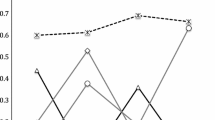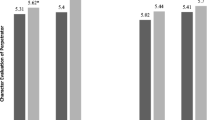Abstract
The purpose of this research was to assess differences in the nature of physical aggression experienced by men and women. Random digit dialing with Computer Assisted Telephone Interviewing was used to obtain a sample of 1,753 Ontario adults aged 18–60 (response rate of 67%). This method of sampling obtains respondents who reflect the ethnic and social diversity of Ontario. Respondents were asked to describe the most recent incident of physical aggression in which they had been personally involved during the past year. Most incidents reported by females were with a male opponent, usually a spouse, partner, or friend, did not involve alcohol consumption, resulted in high negative emotional impact, and pertained to jealousy. Incidents reported by males tended to be with other males, friends or strangers, in bars or public places, and involved four or more participants who had been drinking. Incidents involving only men had lower emotional impact on respondents and included more punching, threatening, and insulting behavior compared to incidents involving other gender combinations. These results are discussed in terms of the implications for violence generally and the importance of addressing male-to-male aggression and factors that foster this form of aggression.
Similar content being viewed by others

REFERENCES
Archer, J. (2000a). Sex differences in aggression between heterosexual partners: A metaanalytic review. Psychological Bulletin, 126, 651-680.
Archer, J. (2000b). Sex differences in physical aggression to partners: A reply to Frieze (2000), O'Leary (2000), andWhite, Smith, Koss, & Figueredo (2000). Psychological Bulletin, 126, 697-702.
Archer, J., Holloway, R., & McLoughlin, K. (1995). Self-reported physical aggression among young men. Aggressive Behavior, 21, 325-342.
Archer, J., Kilpatrick, G., & Bramwell, R. (1995). Comparison of two aggression inventories. Aggressive Behavior, 71, 371-380.
Bell, M. L., & Forde, D. R. (1999). A factorial survey of interpersonal conflict resolution. The Journal of Social Psychology, 139, 369-377.
Bettencourt, B. A., & Miller, N. (1996). Gender differences in aggression as a function of provocation: A meta-analysis. Psychological Bulletin, 119, 422-447.
Björkquist, K. (1994). Sex differences in physical, verbal, and indirect aggression: A review of recent research. Sex Roles, 30(3/4), 177-188.
Burbank, V. K. (1994). Fighting women. Anger and aggression in AboriginalAustralia. Berkeley, CA: University of California Press.
Burns, T. F. (1980). Getting rowdy with the boys. Journal of Drug Issues, 10, 273-286.
Bushman, B. J. (1997). Effects of alcohol on human aggression: Validity of proposed mechanisms. In M. Galanter (Ed.), Recent developments in alcoholism (Vol. 13, pp. 227-244). New York: Plenum.
Campbell, A. (1999). Staying alive. Evolution, culture, and women's intrasexual aggression. Behavioral and Brain Science, 22, 203-252.
Campbell, A., Bibel, D., & Muncer, S. (1985). Predicting our own aggression: Person, subculture or situation? British Journal of Social Psychology, 24, 169-180.
Chilton, R., & Jarvis, J. (1999). Victims and offenders in two crime statistics programs: A comparison of the National Incident-Based Reporting System (NIBRS) and the National Crime Victimization Survey (NCVS). Journal of Quantitative Criminology, 15, 193-205.
Cohen, D., & Vandello, J. (1998). Meanings of violence. Journal of Legal Studies, 27, 567-584.
Craven, D. (1997). Sex differences in violent victimization, 1994. U.S. Bureau of Justice Statistics. (Special Report, NCJ-164508)
Cummings, L. L. (1994). Fighting by the rules: Women street-fighting in Chihuahua, Mexico. Sex Roles, 30(3/4), 189-198.
Daly, M., & Wilson, M. (1998). Homicide (pp. 137-161). New York: Aldine de Gruyter.
Decker, S. H. (1996). Deviant homicide: A new look at the role of motives and victim-offender relationships. Research Crime and Delinquency, 33, 427-449.
Dobash, R. E., & Dobash, R. P. (1998). Violent men and violent contexts. In R. E. Dobash & R. P. Dobash (Eds.), Rethinking violence against women (pp. 141-168). Thousand Oaks, CA: Sage.
Dyck, N. (1980). Booze, barrooms and scrapping: Masculinity and violence in aWestern Canadian town. Canadian Journal of Anthropology, 1, 191-198.
Eagly, A. H., & Steffen, V. J. (1986). Gender and aggressive behavior: A meta-analytic review of the social psychological literature. Psychological Bulletin, 100, 309-330.
Felson, R. B. (1982). Impression management and the escalation of aggression and violence. Social Psychology, 45, 245-254.
Felson, R. B., & Steadman, H. S. (1983). Situations and processes leading to criminal violence. Criminology, 21, 59-74.
Frieze, I. H. (2000). Violence in close relationships-development of a research area: Comment on Archer (2000). Psychological Bulletin, 126(5), 681-684.
Giancola, P. R., & Zeichner, A. (1995). Aninvestigation of gender differences in alcohol-related aggression. Journal of Studies on Alcohol, 56, 573-579.
Graham, K., & Wells, S. (2001). Aggression among young adults in the social context of the bar. Addiction Research, 9, 193-219.
Greenfield, L. A., & Henneberg, M. A. (2000). Alcohol, crime and the criminal justice system. Paper presented at Alcohol Policy XII Conference, Alcohol and Crime, Research and Practice for Prevention,Washington, DC.
Harris, M. B. (1992). Sex, race, and experiences of aggression. Aggressive Behavior, 18, 201-217.
Harris, M. B. (1994). Gender of subject and target as mediators of aggression. Journal of Applied Social Psychology, 24, 453-471.
Harris, M. G. (1994). Cholas, Mexican-American girls, and gangs. Sex Roles, 30(3/4), 289-301.
Ireland, C. S., & Thommeny, J. L. (1993). The crime cocktail: Licensed premised, alcohol and street offences. Drug and Alcohol Review, 12, 143-150.
Janhevich, D. E. (1998). Violence committed by strangers. Juristat (Vol. 18, No. 9). Ottawa, ON: Statistics Canada, Canadian Centre for Justice Statistics.
Kellermann, A. L., & Mercy, J. A. (1992). Men, women and murder: Gender-specific differences in rates of fatal violence and victimization. The Journal of Trauma, 33(1), 1-5.
Kennedy, L. W., & Forde, D. R. (1996). Pathways to aggression: A factorial survey of routine conflict. Journal of Quantitative Criminology, 12, 417-438.
Knight, G. P., Fabes, R. A., & Higgins, D. A. (1996). Concerns about drawing causal inferences from meta-analyses: An example in the study of gender differences in aggression. Psychological Bulletin, 119, 410-421.
Kruttschnitt, C. (1994). Gender and interpersonal violence. In A. J. Reiss & J. A. Roth (Eds.), Understanding and preventing violence (Vol. 3, pp. 293-376). Washington, DC: National Academy Press.
Lawrence, E., Heyman, R. E., & O'Leary, K. D. (1995). Correspondence between telephone and written assessments of physical violence in marriage. Behaviour Therapy, 26, 671-680.
Lipsey, M. W., Wilson, D. B., Cohen, M. A., & Derzon, J. H. (1997). Is there a causal relationship between alcohol use and violence? In M. Galanter (Ed.), Recent developments in alcoholism (Vol. 13, pp. 245-282). New York: Plenum.
Luckenbill, D. F. (1977). Criminal homicide as a situated transaction. Social Problems, 25, 176-186.
Makepeace, J. M. (1986). Gender differences in courtship violence victimization. Family Relations, 35, 383-388.
Murdoch, D., Pihl, R. O., & Ross, D. (1990). Alcohol and crimes of violence: Present issues. International Journal of the Addictions, 25, 1065-1081.
Nisbett, R. E., Polly, G., & Lang, S. (1995). Homicide andU.S. regional culture. In R. B. Ruback & N.A. Weiner (Eds.), Interpersonal violent behaviors. Social and cultural aspects (pp. 135-151). New York: Springer.
Pernanen, K. (1991). Alcohol in human violence. New York: Guilford.
Potter, L. B., Sacks, J. J., Kresnow, M., & Mercy, J. (1999). Non fatal physical violence, United States, 1994. Public Health Reports, 114, 343-352.
Rand, M. R., & Strom, K. (1998). Violence-related injuries treated in hospital emergency departments. U.S. Department of Justice, Office of Justice Programs, Bureau of Justice Statistics. (Special Report)
Rennison, C. M. (2001). Criminal victimization 2000: Charges 1999-2000 with trends 1993-2000. U.S. Bureau of Justice Statistics. National Crime Victimization Survey. (NCJ-187007)
Richardson, D. R., & Green, L. R. (1999). Social sanction and threat explanations of gender effects on direct and indirect aggression. Aggressive Behavior, 25, 425-34.
Stanton, B., Baldwin, R. M., & Rachuba, L. (1997). Aquarter century of violence in the United States. An epidemiologic assessment. Psychiatric Clinics of North America, 20, 269-282.
Straus, M. A. (1979). Measuring intrafamily conflict and violence: The conflict tactics (CT) scales. Journal of Marriage and the Family, 41, 75-88.
Straus, M. A. (1990). Measuring intrafamily conflict and violence:The conflict tactics (CT) scales. In M. A. Straus & R. J. Gelles (Eds.), Physical violence in American families (pp. 29-47). New Brunswick, NJ: Transaction Publishers.
Straus, M. A., & Gelles, R. J. (1990). Societal change and change in family violence from 1975 to 1985 as revealed by two national surveys. In M. A. Straus & R. J. Gelles (Eds.), Physical violence in American families (pp. 113-131). New Brunswick, NJ: Transaction.
Straus, M. A., Hamby, S. L., Boney-McCoy, S., & Sugerman, D. B. (1996). The revised Conflict Tactics Scales (CTS2). Journal of Family Issues, 17, 283-316.
Streifel, C. (1997). Gender, alcohol use, and crime. In R.W. Wilsnack & S. C. Wilsnack (Eds.), Gender and alcohol. Individual and social perspectives (pp. 395-412). New Brunswick, NJ: Rutgers Center of Alcohol Studies.
Tomsen, S. (1997). A top night out-Social protest, masculinity and the culture of drinking violence. British Journal of Criminology, 37, 990-1002.
Vivian, D., & Langhinrichsen-Rohling, J. (1994). Are bi-directionally violent couples mutually victimized? A gender sensitive comparison. Violence and Victims, 9(2), 107-124.
Wells, S., & Graham, K. (1999). The frequency of third party involvement in incidents of barroom aggression. Contemporary Drug Problems, 26, 457-480.
Wells, S., Graham, K., & West, P. (2000). Alcohol-related aggression in the general population. Journal of Studies on Alcohol, 61, 626-632.
White, J. W. (1983). Sex and gender issues in aggression research. In R. G. Geen & E. I. Donnerstein (Eds.), Aggression: Theoretical and empirical reviews (Vol. 2, pp. 1-26). New York: Academic Press.
Wilbanks, W. (1984). Murder in Miami. An analysis of homicide patterns and trends in Dade County (Miami) Florida, 1917-1983. Lanham, MD: University Press of America.
Wilsnack, R. W., Vogeltanz, N. D., Wilsnack, S. C., & Harris, T. R. (2000). Gender differences in alcohol consumption and adverse drinking consequences: Cross-cultural patterns. Addiction, 95, 251-265.
Author information
Authors and Affiliations
Corresponding author
Rights and permissions
About this article
Cite this article
Graham, K., Wells, S. The Two Worlds of Aggression for Men and Women. Sex Roles 45, 595–622 (2001). https://doi.org/10.1023/A:1014811624944
Issue Date:
DOI: https://doi.org/10.1023/A:1014811624944



